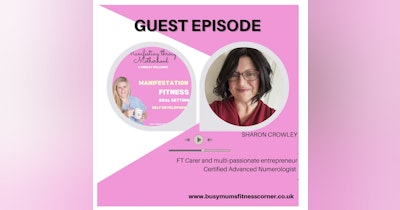Living with Fibromyalgia and Keeping fit-A Holistic Approach to Well-being
Living with fibromyalgia can present unique challenges, but incorporating fitness into your routine can be a powerful tool for managing symptoms and enhancing overall well-being. In this blog, we'll explore the connection between fibromyalgia and fitness, and how adopting a holistic approach to exercise can make a positive impact on your life.
So let’s understand Fibromyalgia, together
Fibromyalgia is a chronic condition characterized by widespread musculoskeletal pain, fatigue, and tenderness in specific areas of the body. Individuals with fibromyalgia often face difficulties in daily activities and may experience sleep disturbances, cognitive challenges, and mood swings. While there is no cure for fibromyalgia, a comprehensive approach to management can significantly improve your quality of life. I have lived with it for many years without knowing. With reoccurring trips to the Drs for many years, I was just sent away with limited pain management, I had already tried neck injections, physiotherapy, acupuncture and massages but ultimately I was being treated for something that wasn’t the solution. I loved the massage which I paid privately for but days after I was paralyzed with a full pain I had to cope with. In hindsight, the massage of choice was probably too vigorous but felt relief at the time. The more my muscles were manipulated the worse the pain lasted. Sadly, I don’t think there is enough data for fibromyalgia.
Benefits of Fitness for Fibromyalgia
Engaging in regular physical activity can offer a range of benefits for those with fibromyalgia. It helps to improve muscle strength, flexibility, and endurance, while also promoting better sleep and reducing stress. Exercise triggers the release of endorphins, the body's natural painkillers, which can alleviate the discomfort associated with fibromyalgia. Working prior as a Personal Trainer I probably brought on more flare-ups and fatigue due to the level of impact of fitness I was teaching and undertaking. Plus the gravity of 20 years of hairdressing on my feet in the salons and the use of equipment my muscles were sadly not recovering fast enough for my body to recover. Work-life balance is tough for anyone, but adding pregnancy, C-section, recovering after that and running my home and business, you have to find a perfect balance, but also to listen to your body and be aware when it’s ready to jump into a flare-up.
Choosing the Right Exercise
When incorporating fitness into a fibromyalgia management plan, it's crucial to choose activities that are gentle on the joints and muscles. Low-impact exercises like swimming, walking, and yoga are excellent choices. These activities provide the benefits of exercise without putting excessive strain on the body.
Sometimes it’s hard to admit defeat, for me, I still want to do what I love, but I will do it carefully and balance the exercise out rather than going full throttle.
Gradual Progression
It's important to start slowly and gradually increase the intensity and duration of your workouts. Listening to your body and recognizing its limits can prevent overexertion, minimizing the risk of flare-ups. Consistency is key, and finding a routine that works for you is essential for long-term success.
Mind-body Connection
In addition to the physical benefits, incorporating mindfulness practices into your fitness routine can enhance the mind-body connection. Mindfulness, through techniques like meditation and deep breathing, can help manage stress and improve mental clarity, contributing to an overall sense of well-being.
Building a Support System
Embarking on a fitness journey with fibromyalgia can be challenging, but having a support system to help you manage pain can ease the burden, especially around freeing up time for yourself maybe that’s through outsourcing or delegating tasks that can trigger your pain. Having the correct pain management plan or medications will allow you to be able to partake in some physical activity and reduce flare-ups. Exercise support groups are helpful if there are any in your area or finding the right coach online to support you with an exercise prescription.








